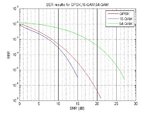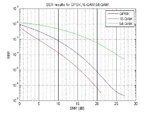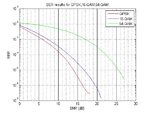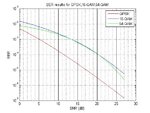WUID
Member level 2
Hi all,
i tried this for arbitrary matrix size:
%%%%matlab code
pol=cyclpoly(rows,cols); h=cyclgen(cols,pol); henc=sparse(h); l=fec.ldpcenc(henc)
by doing that i am able to encode my msg with ldpc object.
is this method legal ?
this was done after trying many codes for creating arbitrary matrices and
for those i was always got an error with l=fec.ldpcenc(henc) line.
thx in advance
Ehud,
*sorry about my English.
i tried this for arbitrary matrix size:
%%%%matlab code
pol=cyclpoly(rows,cols); h=cyclgen(cols,pol); henc=sparse(h); l=fec.ldpcenc(henc)
by doing that i am able to encode my msg with ldpc object.
is this method legal ?
this was done after trying many codes for creating arbitrary matrices and
for those i was always got an error with l=fec.ldpcenc(henc) line.
thx in advance
Ehud,
*sorry about my English.



